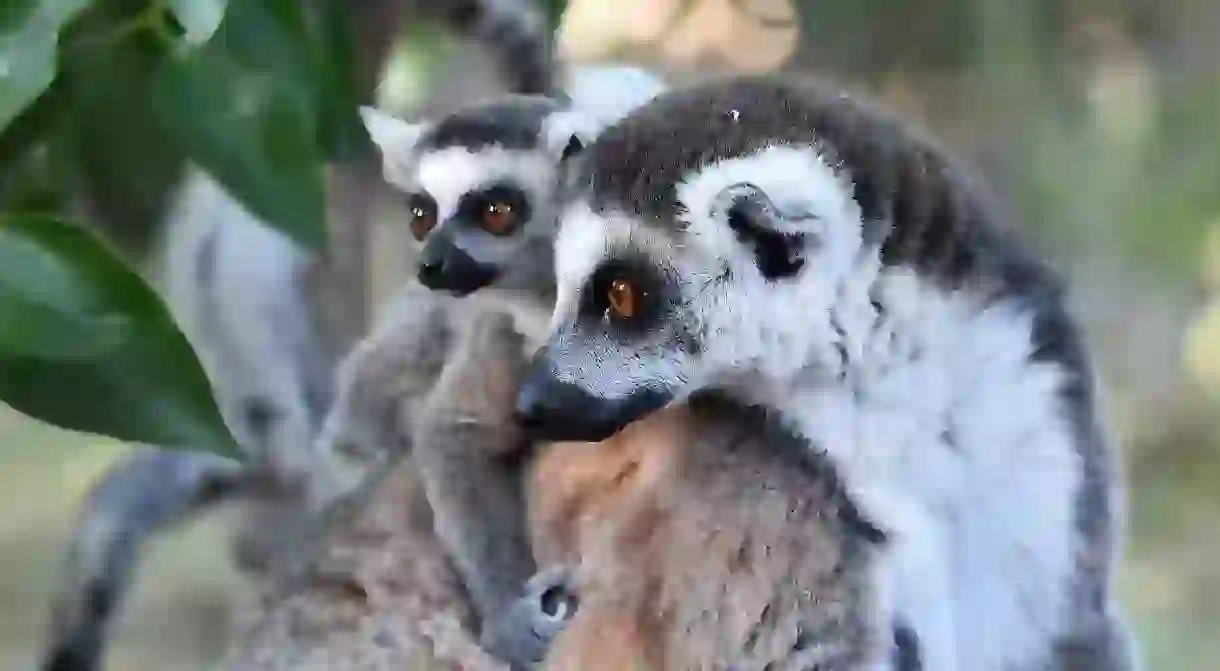Meet Madagascar's Newest Lemur

Lemurs are one of Madagascar’s most famous native animals – and despite there being more than 100 known species, more are still being discovered.
Lemurs are members of the primate family endemic to Madagascar and among the most threatened animals on the planet. According to the IUCN Red List of Threatened Species, 94% of lemurs are at risk of extinction and 22 of the 101 surviving lemur species are critically endangered; threatened by hunting and deforestation. Yet, these endearing creatures, while rare, can still be spotted in the wild in Madagascar’s national parks and nature reserves as well as at the Tsimbazaza Zoo in the capital city of Antananarivo.
Madagascar is home to more than 100 subspecies of lemur including the ring tailed lemur, the blue-eyed black lemur, the sifaka (“the dancing lemur”) and the rare, nocturnal aye-aye. Scientists are discovering new species all the time; such as three new species of mouse lemur recently identified in Nosy Boraha.

Mouse lemurs can only be found in Madagascar. These nocturnal lemurs are small with brown fur and large eyes. The three new species described by the scientists were: the Boraha mouse lemur (Microcebus boraha), Ganzhorn’s mouse lemur (Microcebus ganzhorni) and the Manitatra mouse lemur (Microcebus manitatra).
They were discovered in 2016 by scientists from the German Primate Center (DPZ) at the University of Kentucky, the American Duke Lemur Centre and the Université d’Antananarivo in Madagascar. The descriptions of the new lemur species were made possible by scientific expeditions to remote areas of the country along with new genetic methodologies. The discovery brings the number of confirmed mouse lemur species up to 24 – up from just two known species 20 years ago.

Peter Kappeler, Head of the Behavioral Ecology and Sociobiology Unit at the German Primate Center said: “By using new, objective methods to assess genetic differences between individuals, we were able to find independent evidence that these three mouse lemurs represent new species.”
He continued to explain that, “The genetic techniques we used could facilitate species identification, thus also contributing to further new descriptions in other animal groups.”
Named after its natural habitat (Nosy Boraha on the Island of Sainte Marie), the Boraha mouse lemur is approximately 28 to 29cm long (head and body) with a 14cm long, tufty tail, short ears and long hind feet. It weighs approximately 56g which is relatively large for a mouse lemur.

Ganzhorn’s mouse lemur was named after Professor Jörg Ganzhorn; an ecologist from Hamburg who spent more than 30 years researching ecology and conservation in Madagascar. Ganzhorn dedicated his career to the research and protection of lemurs and began the German Primate Center’s field research in Madagascar in the 1990s. Kappeler and his team had described two new mouse lemur species only two years previously.
The scientists have been able to learn more about these new species by exploring previously inaccessible areas. “To know the exact distribution area of individual species is necessary to identify functioning protected areas,” says Kappeler. “Furthermore, this new information is an important element towards better understanding how biodiversity on Madagascar arose.”
Anne Yoder, a Professor of Biology and Evolutionary Anthropology and Director of the Duke Lemur Centre, explained to Scientific American why so many new species of lemur – particularly mouse lemurs – have been discovered in recent years despite living in a time of global travel and having access to remote areas of the planet. She says: “Mouse lemurs are morphologically cryptic, they are tiny, they are nocturnal, and they occur in remote places. It therefore makes a lot of sense that the harder we look, the more species we will find.”

While more species of lemur are being discovered, these beautiful animals remain at risk from habitat destruction caused by illegal logging as well as being hunted for food.
For Yoder, public awareness is key. She has found that the Malagasy people take great pride in protecting the species and understand that certain lemurs are unique to Madagascar and “that the government needs to participate in protecting the forests, and in providing economic alternatives to slash and burn agriculture to the Malagasy people.”
For Dr Christoph Schwitzer, Vice-Chair for Madagascar of the IUCN Species Survival Commission’s Primate Specialist Group and Director of Conservation at the Bristol Zoological Society, there is “still hope”. He explains that “past successes demonstrate that collaboration between local communities, non-governmental organisations and researchers can protect imperiled primate species. We urgently invite all actors to join our efforts to ensure the continued existence of lemurs and the biological, cultural and economic richness they represent.”
Lemurs might be the most endangered mammal group in the world but, with hard work and collaboration, experts hope to protect this endangered species. Schwitzer is optimistic and says he “wouldn’t give up on any species of lemur.”













